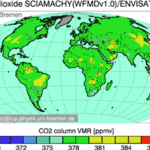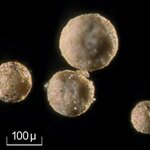Environment

In the human world , some humans try to bank money to obtain financial security and occasionally form groups to reduce risks and increase gains.
Regardless of well-known financial wisdom, some people still end up in 'poverty traps', where because of fewer resources and an increasingly high cost of living they find themselves unable to increase their quality of life.
Over a 20-year period, Gregory Rasmussen, currently at Lady Margaret Hall Oxford, intensively studied every move of African wild dogs in Zimbabwe to the extent of "living with packs" for periods of up to a month in order…

Sandia scientists are helping train Iraqi scientists and technicians to clean up radioactively contaminated sites and safely dispose of the radioactive wastes as part of the Iraqi Nuclear Facility Dismantlement and Disposal Program.
In 2003, following Operation Iraqi Freedom, looters removed contaminated scrap metal and dozens of 50-gallon barrels that contained yellowcake uranium. The looters poured yellowcake on the ground and in the waterways surrounding Al Tuwaitha and on the village outskirts. Today, the site contains uncharacterized radioactive wastes, waste uranium compounds related to…

The Earth Observation Handbook explains the vital role played by Earth observation satellites in providing the information needed by governments and policymakers to make well-informed decisions for a sustainable future.
This animation of carbon dioxide (CO2) shows how our planet ‘breathes’.
The Earth Observation Handbook is produced by the Committee on Earth Observation Satellites (CEOS) and represent the space based earth observation capacity of some 30 space agencies around the world.
This edition has a particular focus on climate change and on the role of data provided by EO satellites…

A unique, patent-pending collection of microbes that can be used both for cleaning up the environment and addressing our energy needs has earned the U.S. Department of Energy's Savannah River National Laboratory kudos from a newsletter covering the rapidly expanding field of nanotechnology.
Nanotech Briefs awarded SRNL's BioTiger™ a spot on its fourth annual Nano 50™ list, described as the top 50 technologies, innovators and products expected to revolutionize the industry. Nanotech Briefs will present the awards during the National Nano Engineering Conference, Nov. 12-13 in Boston. For…

Modern nuclear techniques are giving the world's scientists and regulators better tools to fight pollution and other environmental threats – even those that may be lurking naturally at the beach or near your backyard. Many of the world's top "radioecologists" are in Morocco this week to assess a dynamic picture.
Environmental protection is drawing more attention in countries at all stages of development. A special area is monitoring the presence and movement of radionuclides in nature -- many of which are associated with societal activities -- to track and prevent contamination of soils,…

For decades, scientists and resource managers have known that wildfires affect forest soils - in a direct sense because it kills vegetation and disrupts soil structure and then in an indirect sense because that then causes erosion. But, the lack of detailed knowledge of forest soils before they are burned by wildfire has hampered efforts to understand fire's effects on soil fertility and forest ecology.
A new study led by the Pacific Northwest (PNW) Research Station addresses this critical information gap and represents the first direct evidence of the toll wildfire can take on forest soil…

With increasing consumer pressure on both farmers and supermarkets to minimize the use of chemical pesticides in fruit and vegetables, a new study funded by the Economic and Social Research Council (ESRC) looks at why there is currently little use of biological alternatives in the UK.
The research suggests that consumer concerns about toxic residues could undermine the recommended ‘five a day’ target for the consumption of fresh fruit and vegetables. Supermarkets have responded to consumer pressure by banning some approved pesticides, but have been slow to embrace biopesticides.…

Efforts to make furniture less flammable have given residents of California higher blood levels of potentially toxic flame retardants called PBDEs (polybrominated diphenyl ethers) - nearly twice the national average, scientists from Massachusetts and California are reporting. Their study, the first to examine regional variations in PBDE levels in household dust and blood within the U.S., is published in Environmental Science & Technology.
In the new study, Ami Zota and colleagues note that PBDEs (polybrominated diphenyl ethers) are widely used as flame retardants in upholstered furniture…

Scientists of the Soil Science and Geopharmacy Research Group of the University of Granada (Spain), directed by Rafael Delgado, have discovered and characterized a new type of atmospheric aerosols named ‘iberulites’, which could be useful for the study of relevant atmospheric reactions from Earth.
Researchers José Luis Díaz Hernández, of the Andalusian Research and Farming, Fishing, Food, and Ecological Production Training Institute and Jesús Párraga Martínez, of the Department of Edaphology and Farming Chemistry of the University of Granada, have insisted that such iberulites form in the…

"We are the most dangerous species of life on the planet, and every other species, even the earth itself, has cause to fear our power to exterminate."
*******
At least that's how Wallace Stegner, American novelist and environmentalist, puts it. And it certainly seems to be the word on the street in a lot of other places these days. Humans are at fault for everything under the sun - figuratively and maybe literally. I don't disagree we can do better but, for the sake of humanity, someone needs to stick up for us.
Humans are the only species in 4.8 Billion years of planetary existence…